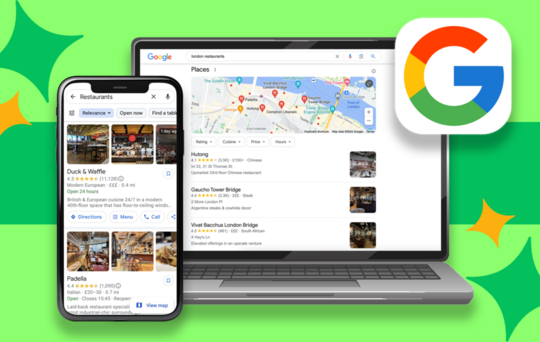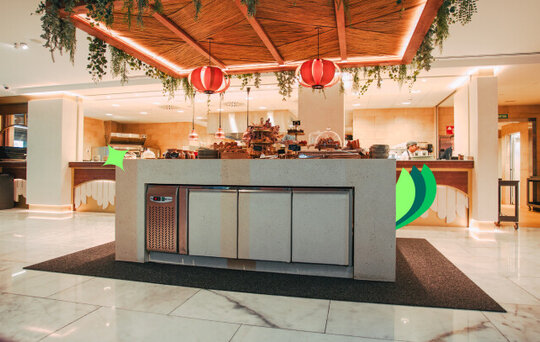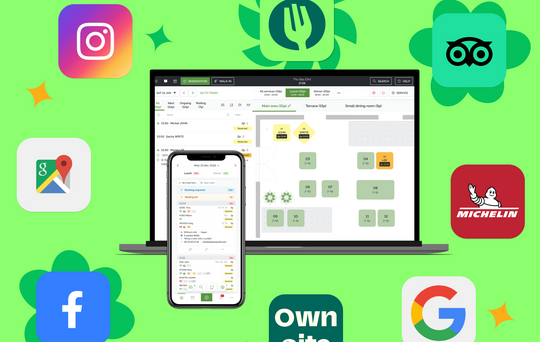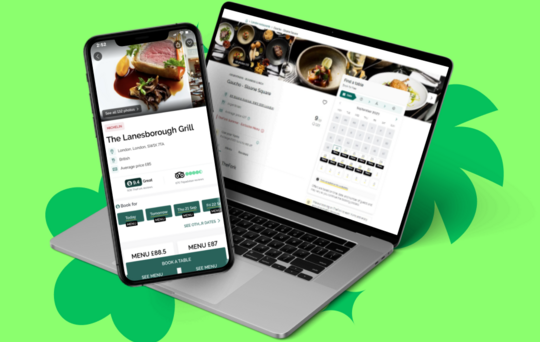Restaurant Software: The Ultimate Guide for English Restaurateurs

- • What is restaurant management software?
- • What types of restaurant software programs exist?
- • Try TheFork Manager today
- • The benefits of using cloud-based restaurant management software
- • Choosing the best restaurant software
- • Implementing and using restaurant software solutions
- • Future prospects for software used in restaurants
- • Empty tables and ever-increasing costs?
In today’s fast-paced restaurant industry, digital solutions have become invaluable for restaurateurs of all sizes. Whether you run a cosy neighbourhood bistro or a large chain establishment, investing in technology is key to optimising your restaurant operations.
Are you looking to streamline processes, save time or reduce costs? Restaurant software solutions offer a multitude of powerful tools that can transform your business. Beyond the efficiency gains, these solutions open doors for growth, helping you reach more customers, improve service, and enhance the overall dining experience. With the right technology in place, your restaurant can thrive in an increasingly competitive market.
What is restaurant management software?
The restaurant management software market in Europe is experiencing rapid growth, with an annual increase of 15.3%, according to Straits Research. But what exactly is restaurant business software, and why is it becoming so popular?
Restaurant software refers to digital tools that help streamline various aspects of a restaurant’s operations, such as managing reservations, organising floor plans, optimising staff schedules, tracking inventory, analysing customer data and much more. These systems offer numerous benefits, including reduced costs and improved overall efficiency which empowers restaurateurs to focus on delivering exceptional dining experiences and growing their business.
What types of restaurant software programs exist?
The growing demand for the best restaurant software highlights the huge variety of digital solutions available in today’s world. Each type of software is designed to address specific operational needs:
- POS systems (Point of Sale): These software solutions handle transactions, track sales and manage customer orders to streamline operations.
- Inventory management software: This kind of restaurant software helps you to monitor stock levels, track ingredient usage and reduce food waste. By automating reordering and providing detailed reports, it helps manage costs effectively.
- Accounting software: When tailored for the restaurant industry, this tool helps restaurateurs manage finances, track expenses, and simply payroll process. Additionally, it can ensure accurate budgeting and provide insights into profitability.
- Reservation and table management software: Designed to optimise seating arrangements, reduce wait times and improve customer flow to enhance the overall dining experience for guests. It also integrates with online booking platforms for superior efficiency and accuracy.
- Employee scheduling software: This type of restaurant software helps efficiently plan staff shifts, ensuring adequate coverage during peak hours and reducing the likelihood of overstaffing.
Each of these solutions contributes to smoother operations, better decision-making, and a more streamlined business overall.
Try TheFork Manager today
The benefits of using cloud-based restaurant management software
Cloud-based restaurant software operates via the Internet, allowing restaurateurs to store and access data remotely. With the ability to manage operations from anywhere, restaurant teams can enjoy the possibility of remote work. Obviously, you’ll need to retain a human touch to deliver the best in-house dining experiences but this is a valuable benefit for administrative and support roles, for example. What’s more, real-time collaboration between staff ensures smooth communication and helps you deliver seamless guest experiences, while the software’s scalability allows resources to grow effortlessly alongside the business as your sales increase. These features result in streamlined operations, enabling restaurants to be more agile and responsive to changing demands.
In addition to boosting productivity, cloud-based software offers automatic updates and maintenance to reduce downtime and eliminate the need for in-house IT support. This not only lowers operational costs but also improves customer satisfaction by ensuring faster service and better order accuracy. Armed with valuable insights into business performance provided by software for restaurants, savvy business owners can further reduce costs and minimise waste, making cloud-based solutions a smart and cost-effective choice for restaurateurs with a results-driven and growth-focused mindset.
Choosing the best restaurant software
When selecting the best restaurant software solution for your establishment, it’s crucial to consider several key factors to ensure it meets your unique business needs.
Start by evaluating the size of your restaurant as your software should be able to scale accordingly. Budget is another major factor; choose a solution that provides a range of capabilities without breaking the bank. Look for features that align with your specific needs, such as POS capabilities, inventory management and customer relationship management tools. Additionally, seek software with user-friendly interfaces and reliable customer support to ensure that help is always on hand if you encounter any issues. To make the right choice, do your research. Read reviews, request demos and even ask for recommendations from fellow restaurateurs to ensure the software you pick will boost your business and enhance your operations rather than complicate them.
Implementing and using restaurant software solutions
Start by assessing your restaurant’s specific needs and selecting software that aligns with your goals. This could be improving reservations, managing inventory or streamlining POS operations. Once you’ve outlined your objectives, the next step is to integrate the software into your existing system, ensuring it works seamlessly with other tools you may already be using and relying on.
A crucial aspect of the implementation process is providing robust training for your staff. Make sure all employees are properly trained on how to use the software’s features, whether that involves handling payments, tracking inventory or managing reservations. Restaurant management software can be used to automate daily tasks like stock management and scheduling, which can help you save time and reduce errors during the day-to-day running of your restaurant. Use the analytics to gain insights into customer preferences, sales trends and operational inefficiencies, so you can make more informed decisions in the future and enhance the overall customer experience.
Future prospects for software used in restaurants
The future of restaurant software is set to revolutionise the hospitality industry by offering greater efficiency, new features, personalisation and data-driven insights. As technology evolves, we can expect more advanced solutions that integrate AI, automation and enhanced customer engagement tools to allow restaurants to streamline operations even further.
Modern all-in-one restaurant management software solutions, like TheFork Manager, are already paving the way for this digital-first future.
TheFork Manager simplifies reservations and table management, while providing valuable insights into customer preferences, helping restaurateurs tailor services and marketing efforts to improve customer satisfaction. With robust features like automated booking confirmations, real-time updates, and integrated review management, it enhances operational efficiency while improving the overall guest experience. As the best restaurant management software options continue to evolve, tools like TheFork Manager will play an important role in helping restaurants stay ahead of the curve in an increasingly tech-driven industry. Try it now!
Empty tables and ever-increasing costs?
- What is restaurant management software?
- What types of restaurant software programs exist?
- Try TheFork Manager today
- The benefits of using cloud-based restaurant management software
- Choosing the best restaurant software
- Implementing and using restaurant software solutions
- Future prospects for software used in restaurants
- Empty tables and ever-increasing costs?














